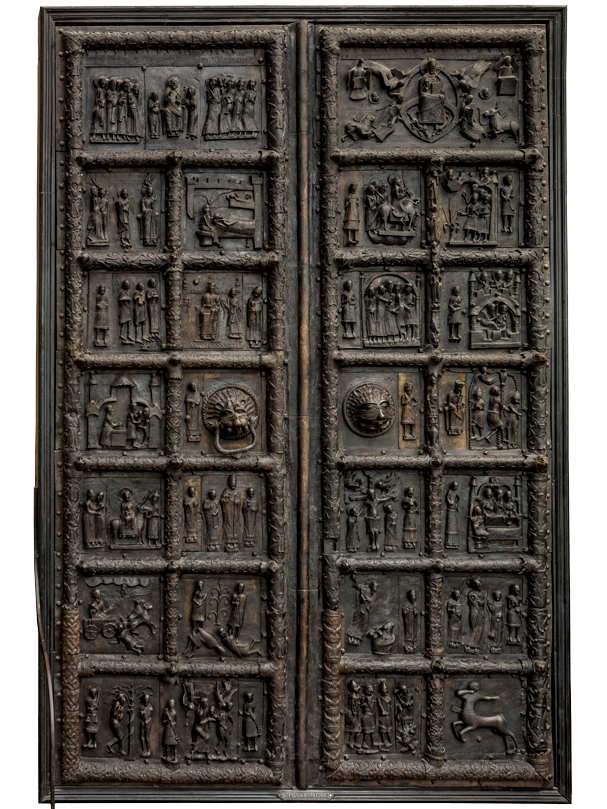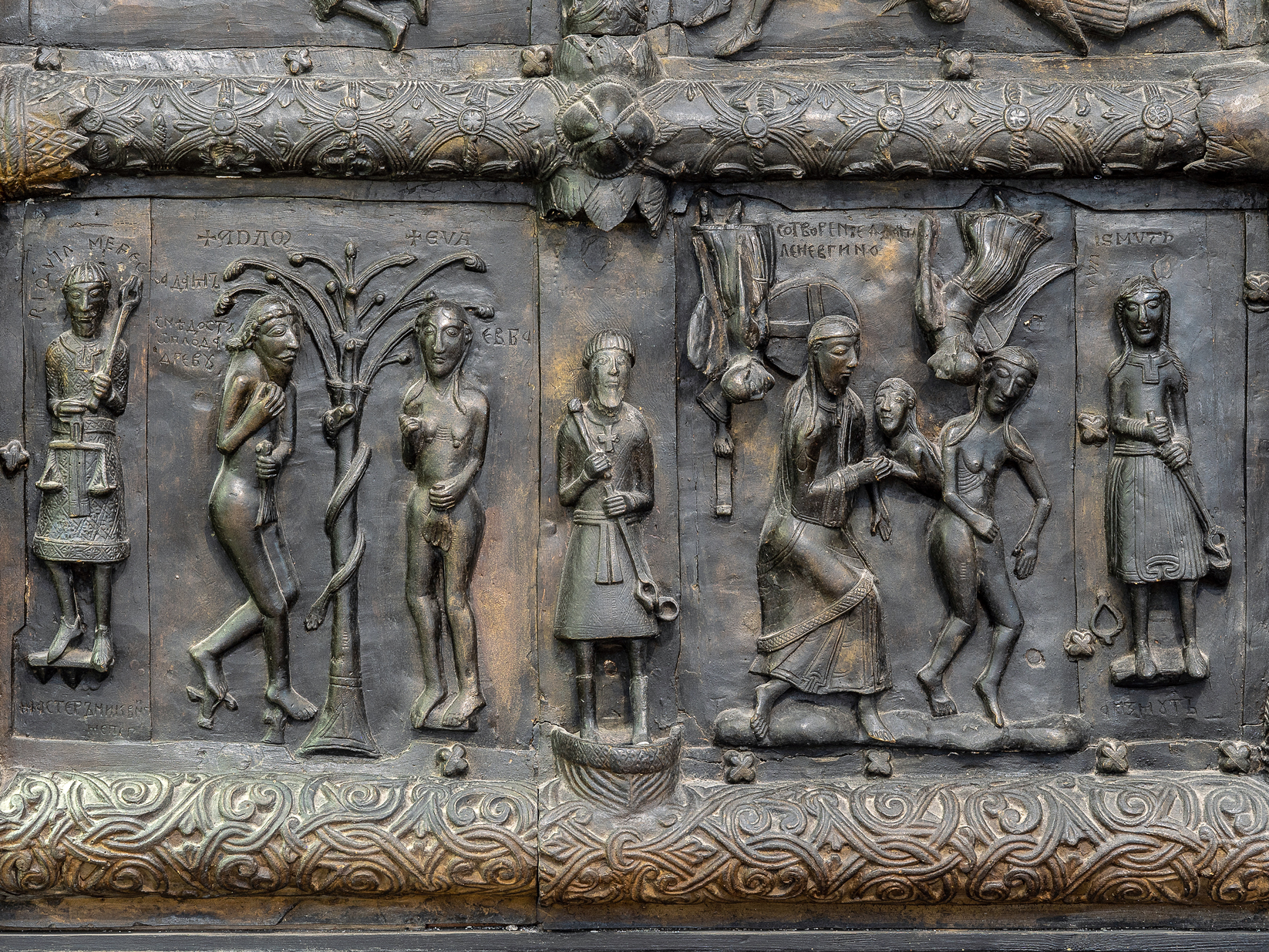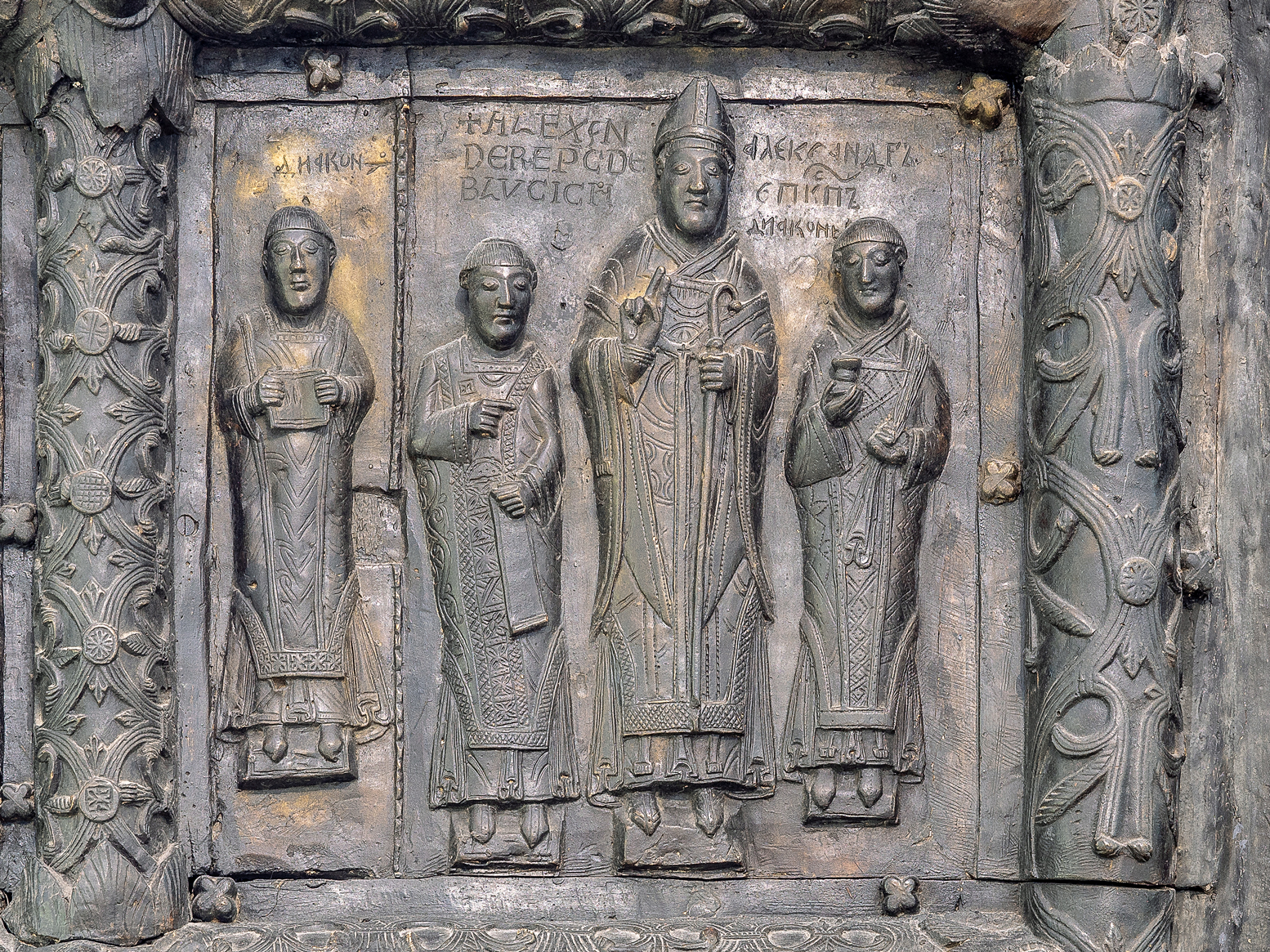SIGTUNA GATES OF ST. SOPHIA CATHEDRAL IN NOVGOROD



Gates were joined by the Russian craftsman and blacksmith Abraham; they were installed in the Cathedral of St. Sophia in Novgorod around 1450.
Gates were made in the German city Magdeburg, but who and how transported them to Russia, remains a controversial issue up to date. According to one of the versions these gates came of Byzantium, and more specifically – from Korsun, they were brought by prince Vladimir (until the new version of the gates origin appeared they were called Korsun Gates), another version says, that Novgorodians brought them as a trophy from the Swedish city Sigtuna (there is a story about the campaign of Novgorodians in 1187 and the complete defeat of Sigtuna). The gates themselves were made in Magdeburg in 1152–1154 and were be designed for the Assumption Cathedral of the Ever-Virgin Mary in Polotsk.
But after they were captured by Novgorodians they were called for a long time the "Sigtun gates". It is believed that these gates were installed in the cathedral around 1450.
Gates were brought to Novgorod disassembled. While installing them it turned out that some details of the gates’ decoration were lost and later they were restored by Russian craftsman.
The wooden base of gates was covered with bronze plates with scenes from the Old and New Covenant, allegorical images.
Among figures depicted on gates are the Magdeburg Bishop Vihman (1152–1192) and the Bishop of Plotsk Alexander (1129–1156). The gates were ordered by them. Also there are images on gates of the craftsman-moulders Riquin (with weights in the right and pincers in the left) and Weissmut (with pincers in hands) who crafted them. Between figures of German creators of gates a figure of the Russian craftsman Avraam is placed. Near each of three figures inscriptions are made: in Latin language near figures of Riquin and Weissmut and in Russian language near the figure of Avraam. According to the legend, gates were taken to pieces for transferring them from Sweden and Avraam joined these pieces back. According to one of versions, Riquin and Weissmut were contemporaries to Avraam, another version says he lived several centuries after them and was leading the process of renewal of gates and added his self portrait on them. This is one of the earliest self portraits of a Russian craftsman.
Door handles, according to the medieval tradition, have the shape of animal masks with attached to their jaws double-headed snakes, serving as an edifying image of Hell and reminding to those who enter the Church of the coming Day of Judgment. Inside mouths of masks sinners are. Latin inscriptions are carved over compositions and under them are Russian translations. In the lower right corner of the left leaf a rare image of the creation of Eve is placed. A centaur (Kitovras) aiming with the bow is a personification of the duality of a human nature.


